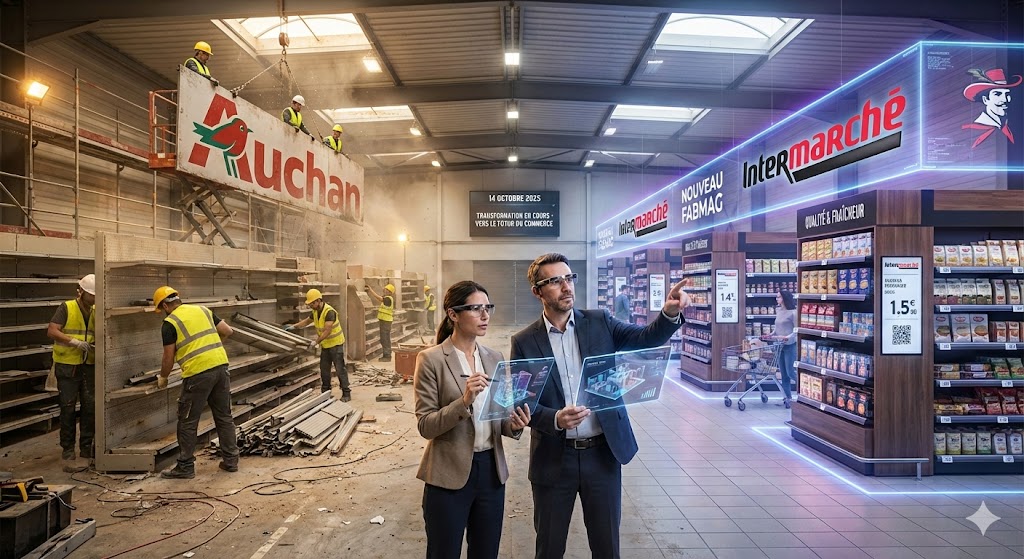
Introduction: what is Sustainable September?
The retail sector is undergoing a profound transformation, driven by the climate emergency and changing consumer expectations in terms of eco-responsible practices.
"Sustainable September" is a campaign originally organized by the BDA to highlight the many ways in which we can all be more sustainable in our eating and drinking habits to protect our environment and our health. Every year, this movement gains momentum. September is becoming a pivotal time when companies and retailers review their practices to better align their operations with environmental objectives.
A striking example is Patagoniaa company which, every year at Sustainable September, proposes a significant new action to combat global warming. In 2022, the company announced that all its profits would be reinvested in initiatives to combat climate change. This initiative not only strengthened their credibility as a sustainable brand, but also inspired other companies to follow their example.

In 2023 and 2024, Patagonia is consolidating its environmental commitments by building on a strong collaboration with the non-profit organization Canopy. Notably by joining the "Pack4Good" initiative, an action that aims to push and help companies to ingeniously and innovatively rethink their packaging with sustainable solutions to preserve our climate and our planet's forts.

Pack4Good is part of this sustainable September approach, and in this article we take a look at what we can do to invent tomorrow's retail.
Why should retailers move towards eco-responsible practices?
According to The Future Shopper Report 202169% of consumers want brands and retailers to adopt an environmental approach to their practices. In other words, customers want to buy products and support companies that take into account their impact on the planet. Retailers must therefore respond to these new demands, or risk losing relevance and loyalty with their customers.
In addition to consumer pressure, retailers also face heavy regulatory pressures. Governments are imposing strict environmental standards, encouraging companies to reduce their carbon footprint and adopt more sustainable practices.
The commercial benefits of a sustainable approach are undeniably significant. According to theOnopia reportreport, companies that integrate sustainable practices see improved credibility with consumers and greater profitability through operational cost savings. By adopting eco-responsible strategies, retailers can not only meet market expectations, but also improve their overall performance.
To find out more, read our article on the 3 major consumer trends to be aware of.
Merchandising still has too high an environmental impact
Traditional merchandising often relies on costly and unsustainable practices. The excessive use of materials to create displays, and the logistics involved in transporting these elements, are major contributors to the retail sector's carbon footprint. For example, the physical prototyping of new in-store layouts involves the creation of numerous copies, often discarded once tested, generating considerable waste.
The retail sector is responsible for around 25% of global greenhouse gas (GHG) emissions. This includes the materials used in merchandising, the transportation of goods and the management of waste generated by displays and packaging. This model is no longer viable at a time when consumers and legislation are imposing more environmentally-friendly practices.
Sustainable September: an opportunity to reinvent retail
Sustainable September represents an excellent opportunity for retailers to reassess their practices and adopt solutions such as 3D merchandising to reinforce their commitment to the environment. It's a good time to launch new sustainable initiatives, and the integration of 3D merchandising enables brands to reduce their environmental impact while enhancing the customer experience.
3D merchandising offers an innovative and environmentally-friendly solution for reinventing retail and making it more sustainable.
The benefits of 3D merchandising in an eco-responsible strategy
The 3D merchandising merchandising is revolutionizing the way retailers design and implement their sales areas. Unlike traditional methods, 3D merchandising enables product presentation concepts to be visualized and tested without the use of physical materials, contributing to a significant reduction in waste. One of the key benefits of this technology is virtual prototyping, which enables retailers to simulate product and packaging layouts directly in an immersive 3D environment. This eliminates the need to create multiple physical prototypes, often discarded after each test.

Hundreds of markers thrown away
Intermarché's testimonial perfectly illustrates the eco-responsible impact of 3D merchandising. Beforeadopting 3D merchandising, to distribute a furniture design to nearly 1,000 points of sale, the validation of a visual involved several prototypes, frequent exchanges and successive corrections, a process that took several weeks and caused a lot of unnecessary waste.
Loic Le Du, head of the concept department, explains: "Using the Retail Staging solution, all we have to do is model the visual in 3D on the platform, then install it in the showroom. This way, we can validate the concept in just a few minutes. Once validated, the project is sent to the printer, and all that's left is to carry out a test at a single point of sale. If it is validated in physical form the following week, the concept goes into production in the 1,000 stores concerned".
Thisprocess not only speeds up the installation of visuals, but also reduces the waste associated with the production of unused prototypes, thus becoming part of a sustainable and eco-responsible approach
Read Intermarché's testimonial on the Retail VR solution
POP advertising: 100,000 tonnes of waste per year
The eco-design of POP (point-of-sale advertising) is a key issue, particularly highlighted by the Popai organization, which has been raising awareness of this necessity among its members for years. Every year, the POP sector generates around 100,000 tonnes of waste, with an average in-store POP lifespan of just 15 days. Companies therefore have a crucial role to play in reducing their carbon footprint by adopting more sustainable practices in the design and use of their advertising media.
Virtual shopper studies: a lever for reducing CO² emissions

Shopper research has a significant carbon footprint, and a comparison of different methods shows the value of virtual solutions in reducing this ecological footprint.
In a study carried out with research firm Enov comparing the carbon impact of a classic shopper study, a poster shopper study and a virtual shopper study, it was found that the "classic" method, carried out in a reconstructed store, generated around 1,500 kg of CO2, mainly due to participants' travel and the energy required to operate the space.
The alternative with a poster-covered space reduces this impact to around 500 kg of CO2, by limiting the travel required to set up the test shelf.
Last but not least, the online solution offered by Retail VR stands out from the crowd with just 300 kg of CO2, thanks to the use of virtual reality and optimized management of digital resources, while covering team travel and data hosting.
This solution proves that it is possible to carry out shopper research while considerably reducing its environmental impact. Of course, 3D and IT as a whole mean server, computer, connection, electricity, etc., so we can't talk about carbon neutrality, but it's still far more virtuous than conventional shopper research.
Read Enov's testimonial on 3D shopper research
Conclusion
3D merchandising is emerging as an essential solution for meeting today's environmental challenges in retail. By reducing physical waste, optimizing logistics and creating immersive experiences, this technology enables retailers to commit to a sustainable approach while improving their sales performance.
Faced with growing pressure from consumers and regulators alike, it's crucial for companies to adopt tools like those offered by Retail VR to modernize their approach to merchandising. By integrating these solutions, retailers can not only reduce their ecological footprint, but also position themselves as leaders in the sector's sustainable revolution. It's time to act and reinvent retail for a more responsible future.



.png)

.webp)
.webp)
.webp)